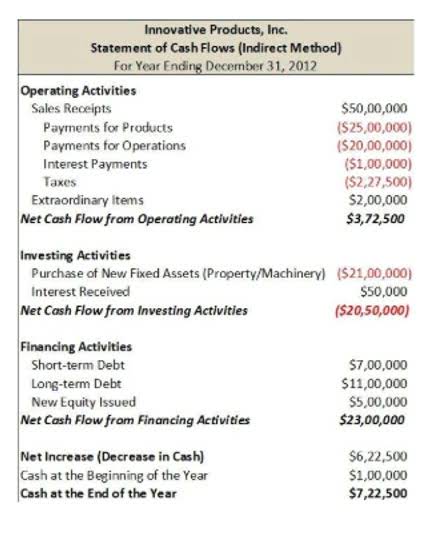
Base erosion and profit shifting (BEPS) refer to tax avoidance strategies that exploit gaps and mismatches in tax rules to artificially shift profits to low or no-tax locations. In the banking sector, Availability (AVAIL) generally refers to funds available for immediate use or withdrawal from an account. Adjusted Rate of Return(ARR) is an altered version of rate return utilized to evaluate a proposed investment using complex calculations based on estimation rather than fixed data points. Accounts Receivable(AR), quite the opposite of Accounts Payable(AP), stands for money owed to your business by your customers after goods or services have been delivered but not yet paid for.
How does Accounting Cycle Create Linkage Between Previous And Current Year? Notes with PDF
- PP&E (Property, plant, and equipment) – Company’s physical assets used to produce products or provide services.
- AE measures all expenses, including employee wages or loan interest, that you haven’t paid yet.
- As a result of this transaction, the asset (cash) and the owner’s equity (expenses) both decreased by $2,000.
- The Foreign Account Tax Compliance Act(FATCA) discourages tax evasion by Americans through offshore banks.
- This has a direct impact on your profitability and paycheck, so it’s crucial to memorize a few key accounting abbreviations.
- HEPS (Headline earnings per share) – A measure of a company’s profitability that considers all of its earnings, including those not from continuing operations.
VE (Variable expenses) – Costs of doing business that vary, such as credit fees and increased production costs as https://www.bookstime.com/ sales grow. SEP (Simplified employee pension plan) – This accounting abbreviations glossary entry is used for a type of retirement plan available to self-employed individuals. ROE (Return on equity) – A measure of how profitable a company is relative to the money that shareholders have invested in it.
Cash on Delivery (COD)
FRN (Floating rate note) – A type of bond that pays a variable interest rate that is adjusted periodically to reflect changes in market conditions. FDIC (Federal Deposit Insurance Corporation) – A government agency that provides deposit insurance to banks and thrifts. FA (Fixed assets) – Long-term and will almost certainly benefit a firm for more than a year, such as real estate, land, or large machinery. EFT (Electronic funds transfer) – The transfer of funds between bank accounts by means of electronic media. DIP (Debt-in-place) – A type of financing used to provide a company with the funds it needs to continue its operations while it is in bankruptcy proceedings. DBA (Doing business as) – A term used to indicate that a company operates under a name other than its legal name.
Does a Business Credit Card Affect Personal Credit?
- Although it’s similar to working capital (WC), net working capital (NWC) has a key difference.
- This accounting principle often considers expenses like sales commissions, purchasing raw materials, or paying for use-based utilities.
- MC (Management consulting) – Providing advice to companies on how to improve their business operations.
- There are many activities that are not considered to be business transactions that are carried out by businesses.
- This is due to the fact that ownership claims have to be paid after creditor claims.
We don’t consider interest, taxes, and other non-operating income while calculating Operating Income. As a result of this transaction, the asset (cash) and owner’s equity (revenues) both increased by $9,000. Creditors and owners can both stake a claim on the assets of a company. In order to determine what belongs to the owners, we first take the claims that the creditors have (which are liabilities) and subtract those from the assets. The amount that is left over is what is known as the owner’s equity in the assets.

IOSCO – International Organization of Securities Commissions

Rasmussen University is accredited by the Higher Learning Commission, an institutional accreditation agency recognized by the U.S. Now that you have a solid foundation of basic accounting terms, you’re ready to start on your path to entering the field. Learn more about the road ahead in our article, “Your Step-by-Step Guide on How to Become an Accountant”. It’s time to roll up those sleeves and start building your accounting vocabulary.

Enterprise Value(EV) measures a company’s total value, including shares, debt, and cash, often used in buyouts or takeovers. Bookkeeping(BK), one pillar of accounting, centers around recording all financial transactions like purchases, sales, receipts & payments by an individual or organization properly. Now you can examine a company and see what it’s worth (on paper) and where the value lies. Google has no “inventory” (ever bought an off-the-shelf product from them?) but has a lot of cash, investments, oe accounting and equipment. If you need to value a company, use its price-to-earnings (P/E) ratio. P/E ratio compares your company’s share price to your earnings per share (EPS).

Current Liabilities (CL)
There are times where a vendor or a business owner unintentionally makes a mistake on an invoice. This disclaimer serves to protect them should a mistake or oversight occur. This helps to protect the person who wrote the invoice in the event that they unintentionally make a mistake when adding up the final invoice amount or any other aspect of the invoice. Reach out for more information, questions or comments about any of our products or HOA Accounting services.Are you an existing customer looking for support? For example, the use of raw materials and packaging materials are both considered to be part of internal transactions.